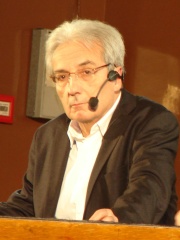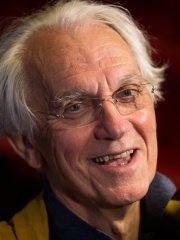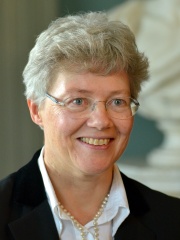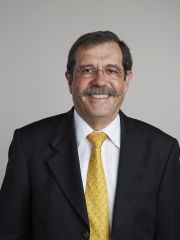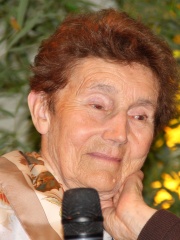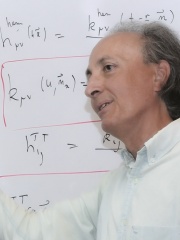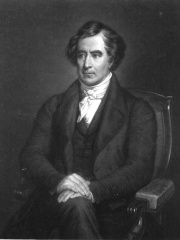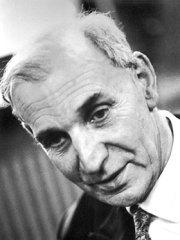

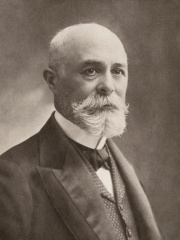
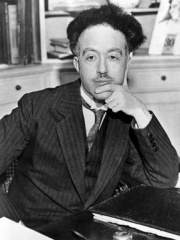
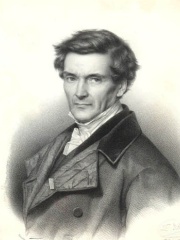
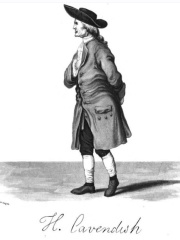
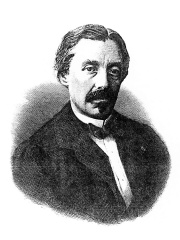
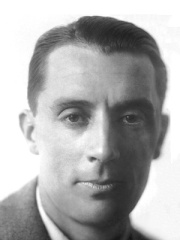
The Most Famous
PHYSICISTS from France
This page contains a list of the greatest French Physicists. The pantheon dataset contains 851 Physicists, 72 of which were born in France. This makes France the birth place of the 4th most number of Physicists behind Germany, and United Kingdom.
Top 10
The following people are considered by Pantheon to be the top 10 most legendary French Physicists of all time. This list of famous French Physicists is sorted by HPI (Historical Popularity Index), a metric that aggregates information on a biography's online popularity. Visit the rankings page to view the entire list of French Physicists.

1. Pierre Curie (1859 - 1906)
With an HPI of 84.35, Pierre Curie is the most famous French Physicist. His biography has been translated into 114 different languages on wikipedia.
Pierre Curie ( KYOOR-ee, kyoo-REE; French: [pjɛʁ kyʁi]; 15 May 1859 – 19 April 1906) was a French physicist and chemist, and a pioneer in crystallography and magnetism. He shared one half of the 1903 Nobel Prize in Physics with his wife, Marie Curie, for their work on radioactivity. With their win, the Curies became the first married couple to win a Nobel Prize, launching the Curie family legacy of five Nobel Prizes.

2. André-Marie Ampère (1775 - 1836)
With an HPI of 84.30, André-Marie Ampère is the 2nd most famous French Physicist. His biography has been translated into 105 different languages.
André-Marie Ampère (UK: , US: ; French: [ɑ̃dʁe maʁi ɑ̃pɛʁ]; 20 January 1775 – 10 June 1836) was a French physicist and mathematician who was one of the founders of the science of classical electromagnetism, which he referred to as electrodynamics. He is also the inventor of numerous applications, such as the solenoid (a term coined by him) and the electrical telegraph. As an autodidact, Ampère was a member of the French Academy of Sciences and professor at the École polytechnique and the Collège de France. The SI unit of electric current, the ampere (A), is named after him. His name is also one of the 72 names inscribed on the Eiffel Tower. The term kinematic is the English version of his cinématique, which he constructed from the Greek κίνημα kinema ("movement, motion"), itself derived from κινεῖν kinein ("to move").

3. Henri Becquerel (1852 - 1908)
With an HPI of 84.07, Henri Becquerel is the 3rd most famous French Physicist. His biography has been translated into 105 different languages.
Antoine Henri Becquerel ( bek-uh-REL; French: [ɑ̃twan ɑ̃ʁi bɛkʁɛl]; 15 December 1852 – 25 August 1908) was a French experimental physicist who shared the 1903 Nobel Prize in Physics with Marie and Pierre Curie for his discovery of radioactivity.

4. Louis de Broglie (1892 - 1987)
With an HPI of 82.00, Louis de Broglie is the 4th most famous French Physicist. His biography has been translated into 93 different languages.
Louis Victor Pierre Raymond, 7th Duc de Broglie (French: [də bʁɔj] ; 15 August 1892 – 19 March 1987) was a French theoretical physicist and aristocrat known for his contributions to quantum theory. In his 1924 Ph.D. thesis, he postulated the wave nature of electrons and suggested that all matter has wave properties. This concept is known as the de Broglie hypothesis, an example of wave–particle duality, and forms a central part of the theory of quantum mechanics. In 1929, de Broglie won the Nobel Prize in Physics, after the wave-like behaviour of matter was experimentally confirmed in 1927. The wave-like behaviour of particles theorized by de Broglie was used by Erwin Schrödinger in his formulation of wave mechanics. De Broglie presented an alternative interpretation of these mechanics called the pilot-wave concept at the 1927 Solvay Conferences, but then abandoned it. In 1952, David Bohm developed a new form of the concept which became known as the de Broglie–Bohm theory. De Broglie revisited the idea in 1956, creating another version that incorporated ideas from Bohm and Jean-Pierre Vigier. Louis de Broglie was the sixteenth member elected to occupy seat 1 of the Académie française in 1944, and served as Perpetual Secretary of the French Academy of Sciences. De Broglie became the first high-level scientist to call for establishment of a multi-national laboratory, a proposal that led to the establishment of the European Organization for Nuclear Research (CERN). Among his publications were The Revolution in Physics and Matter and Light. He was honorary president of the French Association of Science Writers and received the inaugural Kalinga Prize from UNESCO for his efforts to popularize science.
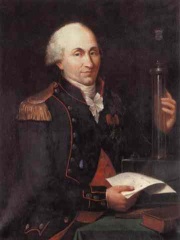
5. Charles-Augustin de Coulomb (1736 - 1806)
With an HPI of 80.87, Charles-Augustin de Coulomb is the 5th most famous French Physicist. His biography has been translated into 86 different languages.
Charles-Augustin de Coulomb ( KOO-lom, -lohm, koo-LOM, -LOHM; French: [kulɔ̃]; 14 June 1736 – 23 August 1806) was a French officer, engineer, and physicist. He is best known as the eponymous discoverer of what is now called Coulomb's law, the description of the electrostatic force of attraction and repulsion. He also did important work on friction, and his work on earth pressure formed the basis for the later development of much of the science of soil mechanics. The SI unit of electric charge, the coulomb, was named in his honor in 1880.

6. Gaspard-Gustave de Coriolis (1792 - 1843)
With an HPI of 78.87, Gaspard-Gustave de Coriolis is the 6th most famous French Physicist. His biography has been translated into 57 different languages.
Gaspard-Gustave de Coriolis (French: [ɡaspaʁ ɡystav də kɔʁjɔlis]; 21 May 1792 – 19 September 1843) was a French mathematician, mechanical engineer and scientist. He is best known for his work on the supplementary forces that are detected in a rotating frame of reference, leading to the Coriolis effect. He was the first to apply the term travail (translated as "work") for the transfer of energy by a force acting through a distance, and he prefixed the factor +1⁄2 to Leibniz's concept of vis viva, thus specifying today's kinetic energy.

7. Henry Cavendish (1731 - 1810)
With an HPI of 78.35, Henry Cavendish is the 7th most famous French Physicist. His biography has been translated into 84 different languages.
Henry Cavendish ( KAV-ən-dish; 10 October 1731 – 24 February 1810) was an English experimental and theoretical chemist and physicist. He is noted for his discovery of hydrogen, which he termed "inflammable air". He described the density of inflammable air, which formed water on combustion, in a 1766 paper, On Factitious Airs. Antoine Lavoisier later reproduced Cavendish's experiment and gave the element its name. A shy man, Cavendish was distinguished for great accuracy and precision in his researches into the composition of atmospheric air, the properties of different gases, the synthesis of water, the law governing electrical attraction and repulsion, a mechanical theory of heat, and calculations of the density (and hence the mass) of the Earth. His experiment to measure the density of the Earth (which, in turn, allows the gravitational constant to be calculated) has come to be known as the Cavendish experiment.

8. Léon Foucault (1819 - 1868)
With an HPI of 77.89, Léon Foucault is the 8th most famous French Physicist. His biography has been translated into 70 different languages.
Jean Bernard Léon Foucault (UK: , US: ; French: [ʒɑ̃ bɛʁnaʁ leɔ̃ fuko]; 18 September 1819 – 11 February 1868) was a French physicist who invented the Foucault pendulum, a device demonstrating the effect of Earth's rotation. He also made an early measurement of the speed of light, discovered eddy currents, and is credited with naming the gyroscope.

9. Frédéric Joliot-Curie (1900 - 1958)
With an HPI of 77.57, Frédéric Joliot-Curie is the 9th most famous French Physicist. His biography has been translated into 71 different languages.
Jean Frédéric Joliot-Curie (French: [fʁedeʁik ʒɔljo kyʁi]; né Joliot; 19 March 1900 – 14 August 1958) was a French chemist and physicist who received the 1935 Nobel Prize in Chemistry with his wife, Irène Joliot-Curie, for their discovery of induced radioactivity. They were the second married couple, after his parents-in-law, to win the Nobel Prize, adding to the Curie family legacy of five Nobel Prizes. Joliot-Curie and his wife also founded the Orsay Faculty of Sciences, part of the Paris-Saclay University.
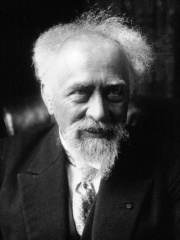
10. Jean Baptiste Perrin (1870 - 1942)
With an HPI of 76.02, Jean Baptiste Perrin is the 10th most famous French Physicist. His biography has been translated into 81 different languages.
Jean Baptiste Perrin (French: [ʒɑ̃ batist pɛʁɛ̃]; 30 September 1870 – 17 April 1942) was a French atomic physicist who, in his studies of the Brownian motion of minute particles suspended in liquids (sedimentation equilibrium), verified Albert Einstein's explanation of this phenomenon and thereby confirmed the atomic nature of matter. For this work, he was awarded the Nobel Prize in Physics in 1926.
People
Pantheon has 72 people classified as French physicists born between 1620 and 1958. Of these 72, 6 (8.33%) of them are still alive today. The most famous living French physicists include Albert Fert, Gérard Mourou, and Anne L'Huillier. The most famous deceased French physicists include Pierre Curie, André-Marie Ampère, and Henri Becquerel.
Living French Physicists
Go to all RankingsAlbert Fert
1938 - Present
HPI: 74.95
Gérard Mourou
1944 - Present
HPI: 69.96
Anne L'Huillier
1958 - Present
HPI: 67.95
Alain Aspect
1947 - Present
HPI: 67.36
Hélène Langevin-Joliot
1927 - Present
HPI: 66.91
Thibault Damour
1951 - Present
HPI: 51.68
Deceased French Physicists
Go to all RankingsPierre Curie
1859 - 1906
HPI: 84.35
André-Marie Ampère
1775 - 1836
HPI: 84.30
Henri Becquerel
1852 - 1908
HPI: 84.07
Louis de Broglie
1892 - 1987
HPI: 82.00
Charles-Augustin de Coulomb
1736 - 1806
HPI: 80.87
Gaspard-Gustave de Coriolis
1792 - 1843
HPI: 78.87
Henry Cavendish
1731 - 1810
HPI: 78.35
Léon Foucault
1819 - 1868
HPI: 77.89
Frédéric Joliot-Curie
1900 - 1958
HPI: 77.57
Jean Baptiste Perrin
1870 - 1942
HPI: 76.02
François Arago
1786 - 1853
HPI: 75.09
Alfred Kastler
1902 - 1984
HPI: 74.81
Overlapping Lives
Which Physicists were alive at the same time? This visualization shows the lifespans of the 25 most globally memorable Physicists since 1700.

